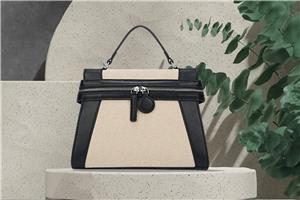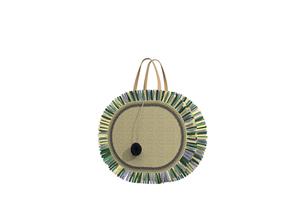Popular Closure Ideas for Tote Bags: Make Your Bags Stand Out
Popular Closure Ideas for Tote Bags: Make Your Bags Stand Out
In the realm of personalization and functionality, finding the perfect closure ideas for tote bags can transform a simple bag into a standout accessory. The choice of closure not only secures the contents within but also contributes to the bag's overall aesthetic and practicality. With an increasing demand for customization in fashion, incorporating unique closures into tote bags offers an opportunity to enhance both style and utility. From the classic hook and loop to the more secure zipper closure, the right bag closure types can elevate a tote from just another bag to a reflection of personal style and needs.
This article explores a variety of closure ideas for tote bags, aiming to provide insights into how each type can make your bags more functional and appealing. Covering popular options like magnetic snap closure, button closure, zipper closure, drawstring closure, and buckles closure, it delves into the advantages and applications of each. Additionally, the discussion extends to how these closures contribute to the customization and versatility of tote bags, making them suitable for a myriad of occasions. Whether you're a designer looking for inspiration or a consumer seeking to personalize your accessory, this guide will navigate the myriad of bag accessories and closures available, ensuring your tote bag stands out for all the right reasons.
Magnetic Snap Closure
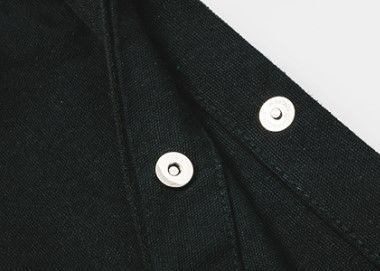
What is a Magnetic Snap Closure?
A magnetic snap closure is a popular type of fastening mechanism used in bags and other accessories. It consists of two main components: a male half with a protruding nub and a female half with a corresponding indentation. These parts snap together with the help of a magnetic attraction, providing a secure closure that is easy to operate.
How to Install a Magnetic Snap Closure
Installing a magnetic snap closure involves a few straightforward steps:
Marking the Placement: Turn the handbag inside out and measure to find the center point where the snap will be placed. Mark this point using tailor's chalk or a similar marking tool .
Preparing the Fabric: Use a seam ripper or small scissors to make slits at the marked points. Care should be taken not to cut too far, as this could damage the fabric .
Attaching the Snap: Insert the prongs of the snap through the slits from the inside of the bag. Position the washer over the prongs on the inside, and bend the prongs outward or inward to secure the snap in place .
Reinforcing the Snap: To ensure the snap stays secure and does not pull through the fabric, it's advisable to add a piece of interfacing or a small patch of leather behind the washer. This step provides additional thickness and strength to the area around the snap .
Pros and Cons of Magnetic Snap Closures
Pros:
Ease of Use: Magnetic snaps are incredibly easy to open and close, making them convenient for everyday use .
Aesthetic Appeal: These snaps can be installed so that they are almost invisible, maintaining the sleek look of the bag .
Versatility: Magnetic snaps are suitable for a wide range of applications, from handbags to coats, depending on the strength of the magnet used .
Cons:
Potential Interference: Magnetic snaps should not be used near sensitive electronic devices or by individuals with pacemakers, as the magnets could interfere with electronic functions .
Durability Concerns: If not reinforced properly, the snap might pull through the fabric, especially with frequent use .
Limited Security: While magnetic snaps close securely, they may not withstand heavy stress or weight, potentially leading to the snap opening unexpectedly .
Magnetic snap closures offer a blend of functionality and style, making them a popular choice for designers and consumers alike. They are particularly valued for their ease of use and clean finish, although considerations around electronic interference and durability should be taken into account.
Button Closure
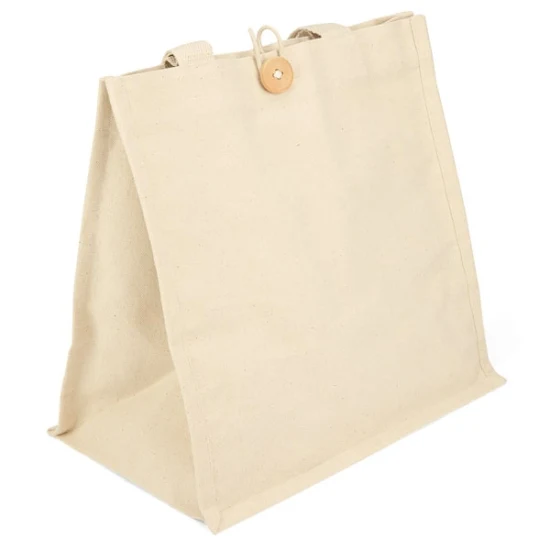
Types of Button Closures (Traditional Button vs. Button Loop)
Button closures on tote bags can be broadly categorized into two types: traditional buttons and button loops. Traditional buttons involve sewing a button directly onto the fabric, which fits through a buttonhole made on the opposite side. Button loops, sometimes known as Rouleau Loops, consist of ready-to-use loops attached to a strip of material called the loop header. These are ideal for use with buttons and commonly found on garments like bridal gowns and other formal attire, but they can also add a classic, elegant closure to tote bags .
Steps to Attach a Button Closure
To attach a traditional button closure, one must first create a tab from a piece of cotton fabric. This fabric is folded and pressed to form a strap about one inch wide, which is then top-stitched for durability. The button is sewn onto the exterior of the bag, and the tab is inserted between the exterior and interior layers, looping over the button to secure the bag .
For a button loop closure, the process involves creating a loop that fits comfortably over the button, adding it to the top edge of the bag before the lining is installed. This loop can be made from bias binding or elastic for flexibility. After basting the loop in place, the bag is completed by adding the lining and stitching the button in the correct position to align with the loop .
Advantages of Using Button Closures
Button closures are not only functional but also contribute significantly to the aesthetic appeal of a tote bag. They offer a touch of elegance and can be customized to match the bag's design. Using high-quality button craft thread ensures that the button remains secure for years, making this type of closure particularly durable . Additionally, pre-made button loops can save time and ensure uniformity and even spacing, which is crucial for achieving a professional finish .
Button closures are versatile and can be adapted for a variety of designs, making them a popular choice for both practicality and style in tote bag customization.
Zipper Closure
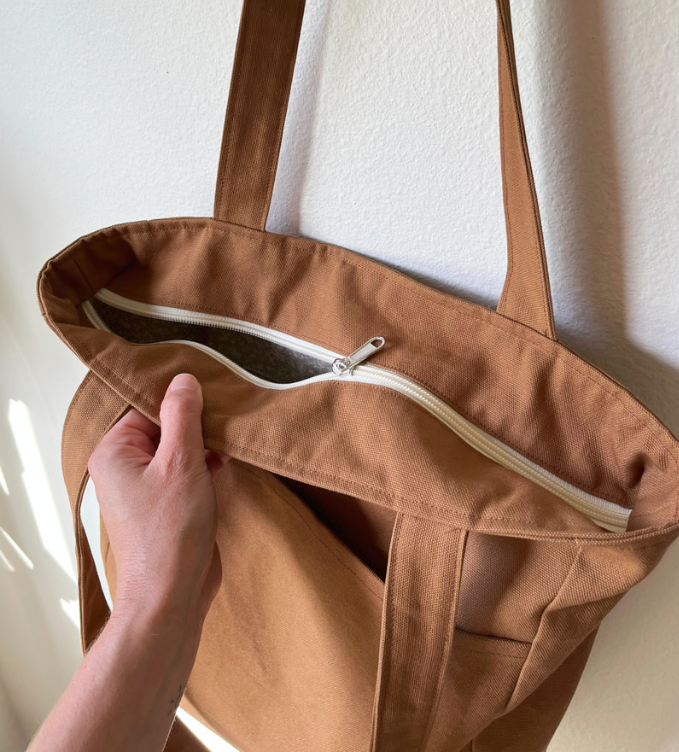
Different Types of Zipper Closures (Standard vs. Recessed)
Zipper closures on tote bags come in various forms, each offering distinct advantages depending on the user's needs. Standard dressmaking zippers are versatile and widely available, making them a popular choice for DIY bag projects. These zippers are economical, come in a multitude of colors, and can be easily adjusted by cutting to size . On the other hand, specialized purse zippers, like the YKK with a single large pull or the Coats purse zipper with dual smaller pulls, provide enhanced durability and are ideal for frequent usage .
Recessed zippers add a neat, professional finish to tote bags. This type of zipper is sewn into the lining of the bag, making it less visible and providing a cleaner look. The process involves preparing the zipper and sewing it onto a casing before attaching it to the bag's lining, ensuring that it does not interfere with the exterior design of the tote .
How to Sew a Zipper Closure
Sewing a zipper into a tote bag can be straightforward with the right preparation. Start by cutting the zipper to the desired length, ensuring it is slightly longer than the bag's width for ease of use. Attach the zipper to a fabric casing by sewing close to the teeth, which helps in maintaining the zipper's alignment and functionality .
For recessed zippers, align the zipper face down on the right side of the casing strip, ensuring all edges are even. Stitch close to the zipper teeth, then repeat the process on the other side. Once the zipper is encased, sew the ends of the casing together, creating a neat finish that prevents the zipper from separating .
Benefits of Zipper Closures
Zipper closures offer numerous benefits that enhance both the functionality and aesthetics of tote bags. They provide security by preventing theft and accidental spills, making them ideal for carrying valuable items . Zippers also allow for better organization within the bag, with the ability to create separate compartments for different items, thus keeping contents neatly arranged and easily accessible .
Moreover, zipper closures protect against weather elements, keeping contents dry and safe in various conditions. The addition of zippered pockets, both internal and external, offers convenient access to frequently used items while ensuring they are secure .
In summary, zipper closures not only enhance the security and functionality of tote bags but also contribute to their overall style and practicality. Whether opting for a standard or recessed zipper, the choice significantly impacts the usability and appearance of the bag, catering to a range of preferences and needs.
Drawstring Closure
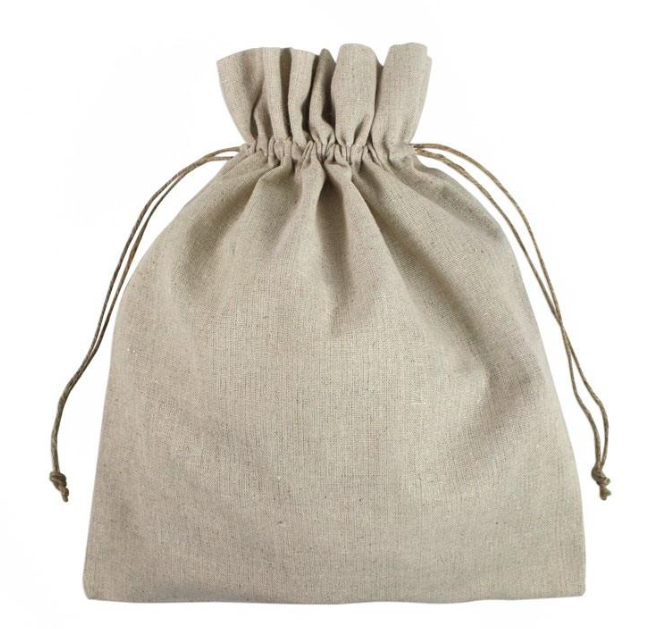
Materials Needed for a Drawstring Closure
Creating a drawstring closure requires specific materials to ensure functionality and durability. The essentials include:
Fabric: For the drawstring closure, rectangle of fabric is needed, which will form the main component of the closure .
Cord or Rope: A twill tape, ribbon, cord, or binding is necessary for the drawstring itself, allowing the bag to be securely closed .
Additional Reinforcements: Optional materials such as interfacing or a small patch of durable fabric can be used to reinforce the area around the closure, enhancing the bag's longevity and usability.
Steps to Create a Drawstring Closure
The process of creating a drawstring closure involves several detailed steps to ensure a professional and functional finish:
Prepare the Fabric: Begin by folding the fabric rectangle in half, aligning the short ends, and sewing from a marked point to the end, backstitching at both ends for security .
Create the Seam: Open the seam and fold each side to the middle, enclosing the raw edges for a neat finish. Topstitch to secure .
Form the Casing: Fold down the top edge of the fabric where the drawstring will thread through, pressing and topstitching to create a durable casing .
Attach to the Bag: Align the prepared drawstring closure with the top edge of the tote bag, securing it in place before adding the bag's lining and stitching it all together .
Thread the Drawstring: Once the bag is assembled, thread the cord through the casing to complete the closure mechanism .
When to Use a Drawstring Closure
Drawstring closures are not only practical but also versatile, making them suitable for various applications:
Casual and Sports Use: They are perfect for gym or yoga bags, as they provide easy access to contents while ensuring everything stays secure during transport .
Children’s Accessories: Their simplicity makes them ideal for children’s bags, as they are easy for little hands to operate .
Travel: Compact and secure, drawstring closures are excellent for organizing travel essentials like passports and snacks .
Events: For events with clear bag policies, transparent drawstring bags offer a stylish and compliant solution .
Promotional Items: Businesses can use drawstring bags as promotional tools by customizing them with logos or brand messages .
Drawstring closures offer a blend of ease, security, and style, making them a popular choice for a wide range of tote bag designs. Whether for daily use or special occasions, they provide an effective way to secure belongings while adding a touch of personal flair to the bag’s design.
Buckles Closure
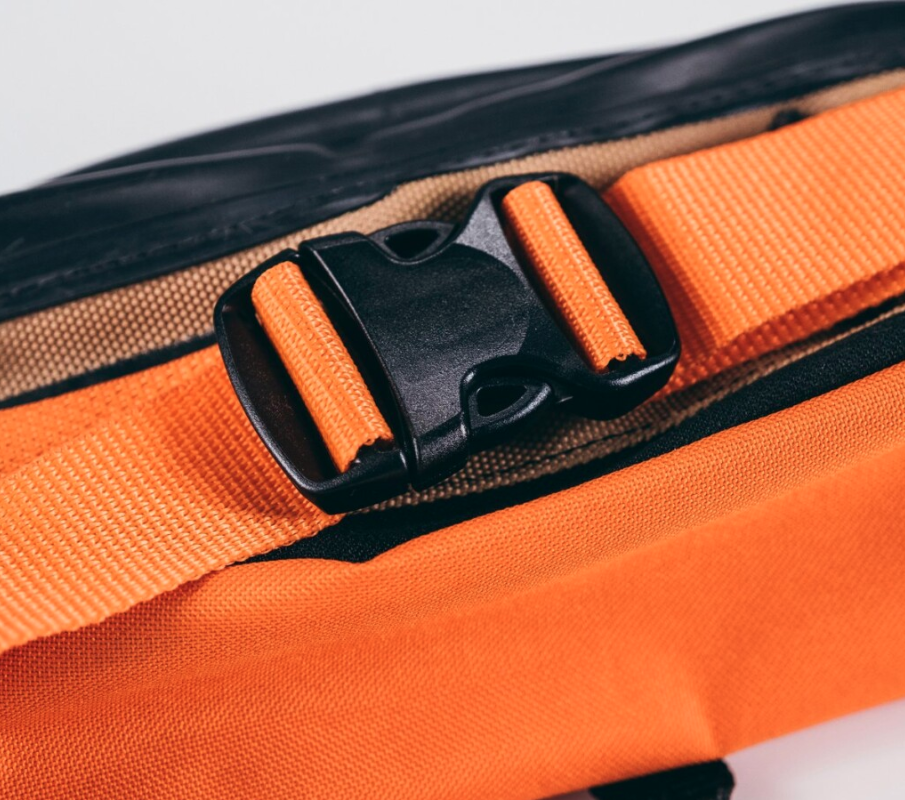
Types of Buckles Used for Tote Bags
Buckle closures are a versatile and stylish option for tote bags, often seen on casual backpacks and other types of bags. There are several types of buckles that can be used, including the side release buckle, which is known for its durability and ease of use. Made from materials like nylon, ABS, PP, and PVC, these buckles are lightweight and rust-free, featuring an adjustable rod that allows for easy adjustment of the strap length with one hand . Metal side release buckles are also popular, offering a quick-release mechanism that is ideal for fast access and secure closure of the bag .
Instructions for Adding a Buckle Closure
Adding a buckle closure to a tote bag can enhance both its functionality and aesthetic appeal. The process involves determining the appropriate position for the closing strap, which varies based on the size and style of the strap closure. Once the position is decided, the strap closure should be placed centrally on the fabric. The lower part of the strap is then hand-stitched to the front panel of the bag. Following this, the second piece of the bag closure is placed centrally and stitched to secure, ensuring the buckle is properly aligned and functional .
Why Choose Buckle Closures?
Buckle closures are not only practical but also add a significant style quotient to tote bags. They are particularly suited for designs that require quick access yet secure closing, such as tote bags used for travel or outdoor activities. The ease of operation with one hand makes buckle closures ideal for those who are often on the move. Moreover, the ability to customize the buckles in terms of shape, color, and size allows designers and users to match the closure to the specific style and needs of the bag, making it a tailored choice for personalization and functionality .
Conclusion
Throughout this exploration of tote bag closures, we've navigated the landscapes of magnetic snaps, buttons, zippers, drawstrings, and buckles, each offering its unique blend of style and functionality. These diverse closure options not only secure the contents of a bag but also greatly contribute to its aesthetic appeal and practical utility. By understanding the specifics of each type, from the easy accessibility of magnetic snaps to the robust security offered by zippers, individuals can make informed decisions that enhance the customization and versatility of their tote bags, making every accessory a personalized statement of style.
As we wrap up this guide, it's clear that the right closure can transform a simple tote into a functional masterpiece that reflects personal taste and meets lifestyle needs. Whether you're a designer seeking inspiration or a consumer aiming to inject a touch of flair into your everyday carry, the journey towards creating the perfect tote bag involves careful consideration of these closure mechanisms. For those looking to explore even more custom choices, feel free to contact us. In the end, it's the small details like closures that underscore the intersection of innovation and personal expression in the world of fashion accessories.
FAQs
1. What are the various types of closures available for bags?
There are multiple closure options for bags, each with unique advantages. Zipper closures offer a tidy and secure finish, button closures provide a traditional look, magnetic closures bring a touch of modern elegance, clasp closures introduce distinctive design elements, tuck or push closures are favored for their high-end appeal, and turn or twist closures enhance portability.
2. How can I install a closure on a tote bag?
Adding a closure to a tote bag can be accomplished in several ways. You can sew a button on one side and attach a loop of elastic on the opposite side to create a simple closure. Alternatively, attaching a string opposite a button allows you to secure the bag by wrapping the string around the button. Installing a zipper along the bag’s opening is another option, as is sewing or mechanically fastening snaps.
3. What exactly is a tuck or push closure?
A tuck lock or press (push) lock is a type of metal buckle used on various items such as handbags and purses. It operates by pressing down on the lock clasp with a thumb, which releases the lock. This mechanism is notably different from a snap button, which secures with a single click.
4. What is the proper way to carry a bag with elegance?
To hold a bag elegantly, grasp it in a manner that complements your overall posture and attire. Opt for a relaxed grip and maintain a poised stance to enhance your sophisticated appearance.

